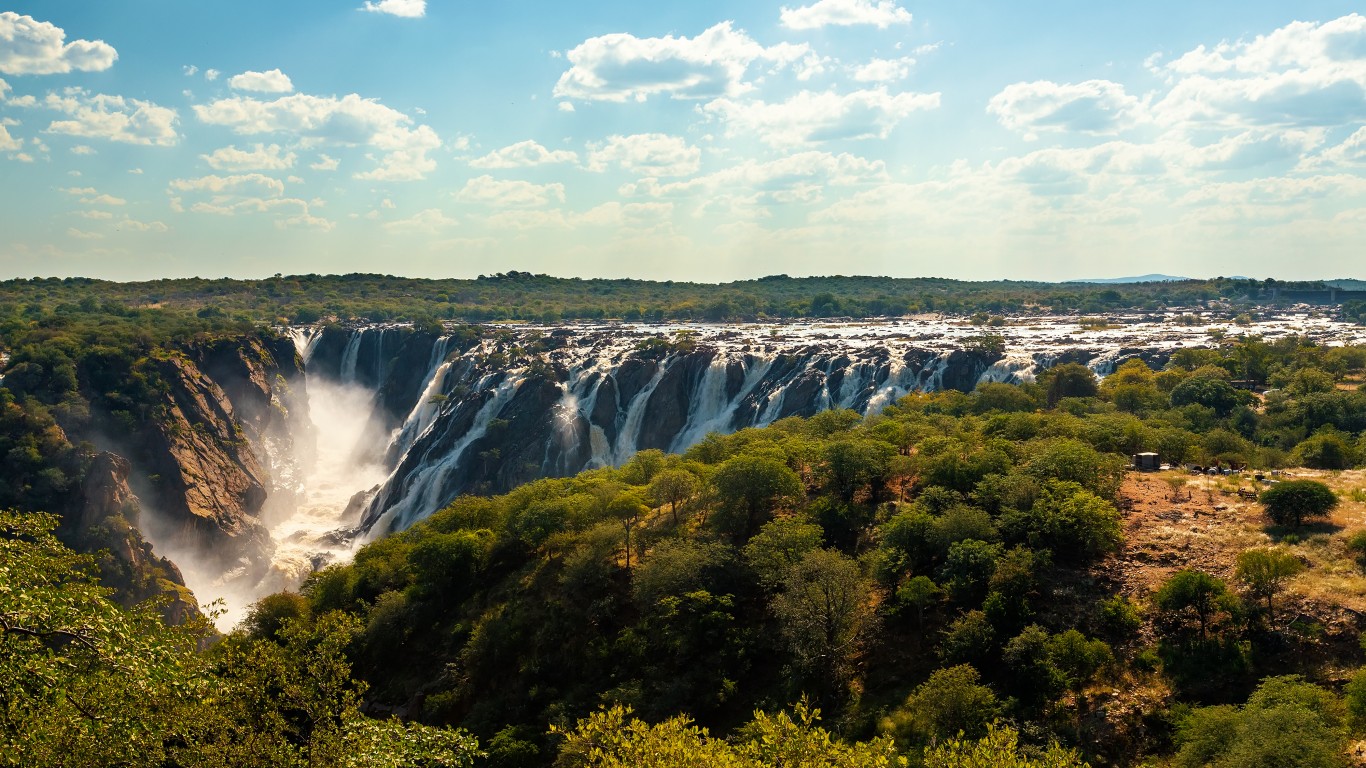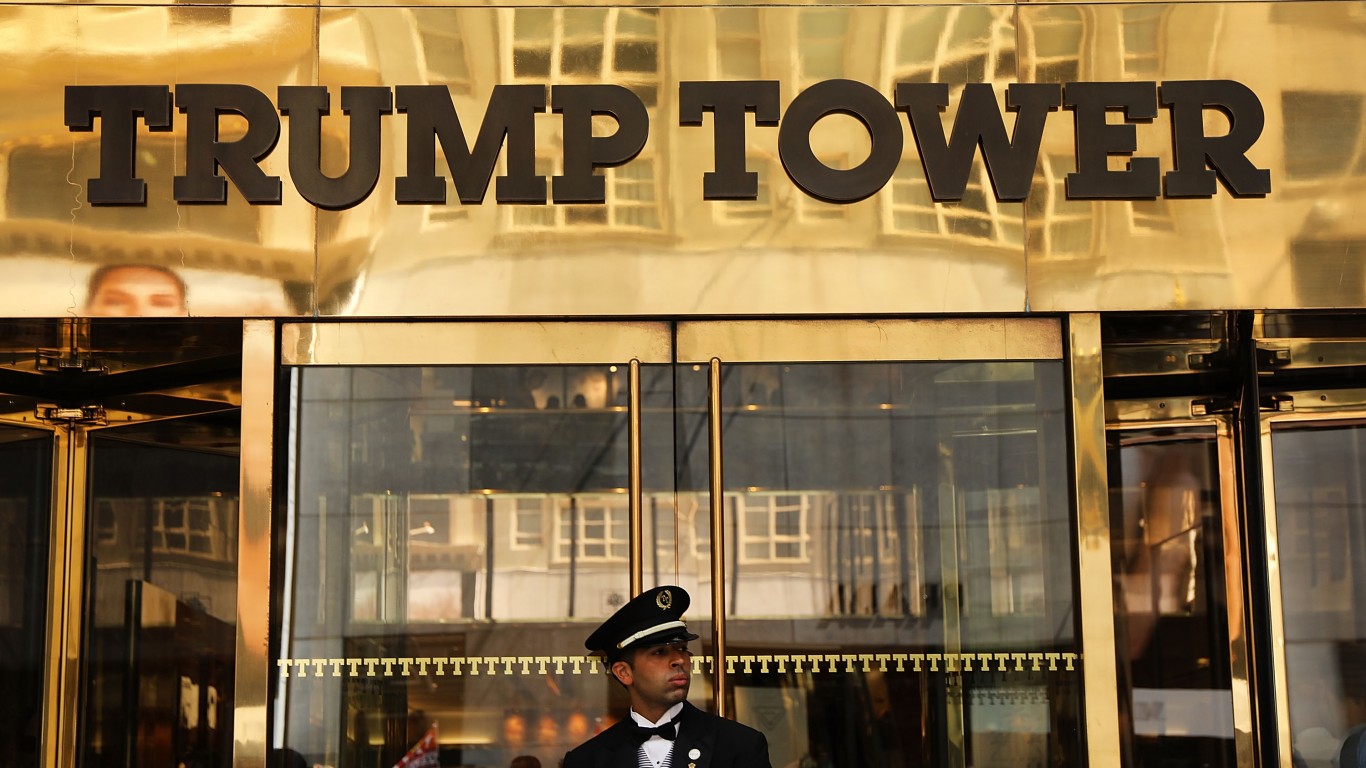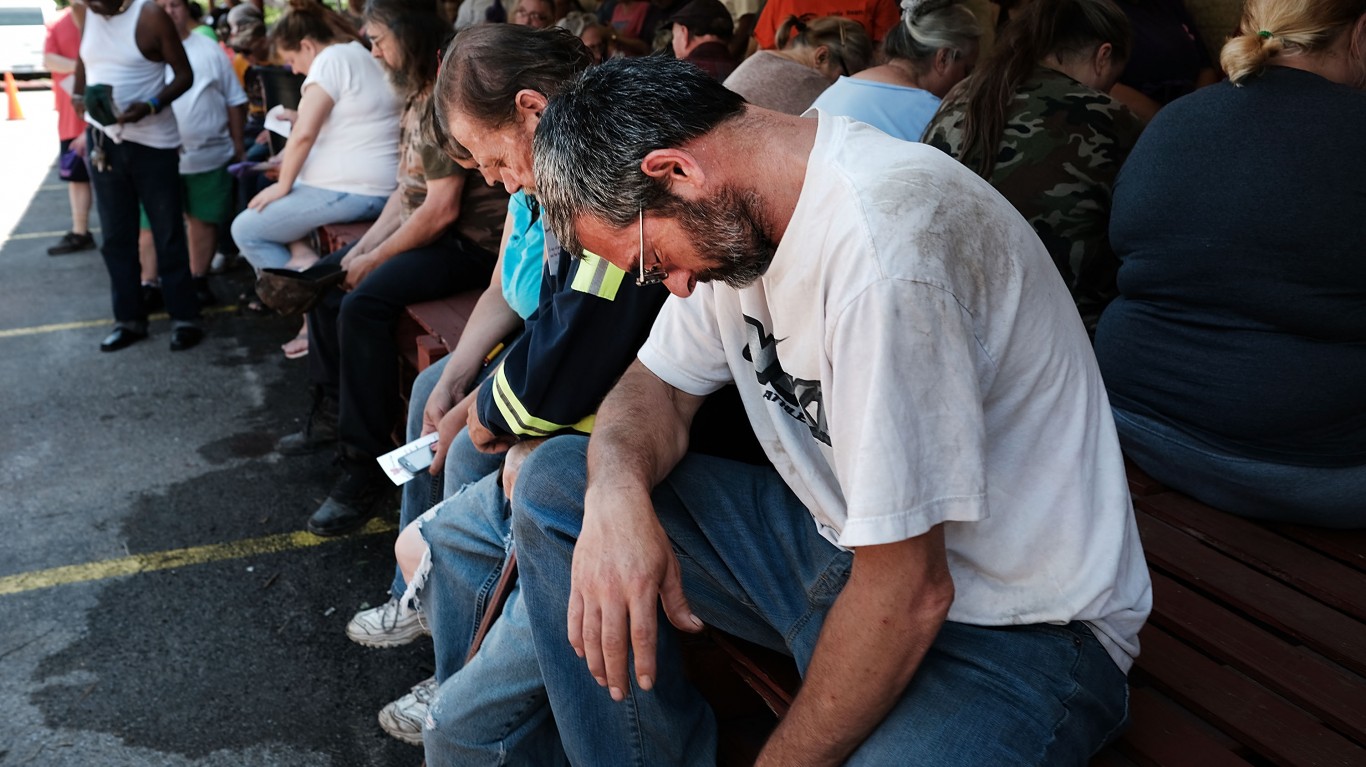
The media and social scientists often comment on the huge chasm in the U.S. between billionaires and financially middle-class and lower-class Americans. Billionaires control a staggering percentage of the combined net worths of all Americans. Even when the measure is broadened to Americans who are the top 1% in annual earnings, their wealth in comparison to America’s poor is huge. However, these differences are not the highest when measured against all of the world’s nations.
To select the country with the widest gap between the rich and the poor, 24/7 Wall St. reviewed data on the Gini coefficient — a measure of income inequality based on the distribution of income across a population — for 218 countries using information from World Bank.
The Gini coefficient measures income inequality on a 0 to 1 scale. A country where all income earned goes to one person would score 1, while a nation full of residents with the same income — would score 0. The Gini coefficient of most of the 115 countries for which there is data is lower than 0.4. Just 10 have a Gini index score of over 0.5, while 20 countries scored under 0.3. For context, the U.S. Gini coefficient is 0.414.
Nearly all of the countries with the widest income gaps are located either in South America or Africa for a variety of reasons, including the lingering effects of many of these nations’ former status as colonies of wealthy countries.
However, income inequality is not isolated to just low-income countries. The U.S. and other wealthy nations also have a fairly wide gap between the richest and poorest residents, and this issue tends to get worse during times of economic hardship. For instance, during the COVID-19 pandemic, while many hourly workers were furloughed or laid off, the wealthiest Americans added significantly to their personal fortunes.
Here is a summary of our methodology: To determine the country with the widest gap between rich and poor, 24/7 Wall St. reviewed data on the Gini coefficient for 218 countries from the World Bank. Countries were ranked on the Gini coefficient, a measure of income inequality based on the distribution of income across a population, using the most recent year of data from 2015 to 2019. Supplemental data on population in 2019; GDP per capita in 2019, estimated using the purchasing power parity method; and percentage of the population living on less than $1.90 a day in 2011 international prices, using the latest year of data from 2015 to 2019, came from the World Bank.
The country with the widest gap between rich and poor is Namibia. Here are details:
> GDP per capita: $10,064 (117th out of 186 countries)
> Poverty rate: 17.4% (74th out of 115 countries)
> Pct. of population living under $1.90 a day: 13.8% (25th out of 101 countries)
> Unemployment rate: 20.4% (6th out of 187 countries)
> Population: 2.5 million
Click here to read these are the countries with the widest gap between rich and poor
Travel Cards Are Getting Too Good To Ignore (sponsored)
Credit card companies are pulling out all the stops, with the issuers are offering insane travel rewards and perks.
We’re talking huge sign-up bonuses, points on every purchase, and benefits like lounge access, travel credits, and free hotel nights. For travelers, these rewards can add up to thousands of dollars in flights, upgrades, and luxury experiences every year.
It’s like getting paid to travel — and it’s available to qualified borrowers who know where to look.
We’ve rounded up some of the best travel credit cards on the market. Click here to see the list. Don’t miss these offers — they won’t be this good forever.
Thank you for reading! Have some feedback for us?
Contact the 24/7 Wall St. editorial team.




